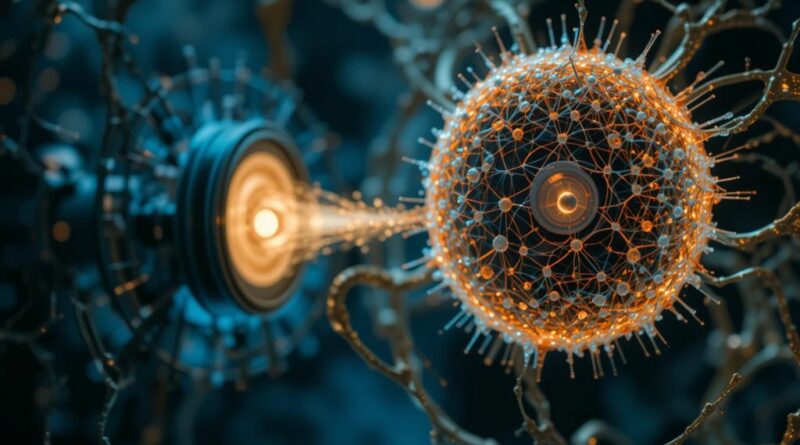How Histotripsy is Transforming Cancer Treatment
Scientists harness the power of precisely focussed sound waves to obliterate tumours without surgery, offering new hope for cancer patients worldwide
In the sterile corridors of the University of Michigan Medical Centre, a quiet revolution is taking place. No surgical instruments gleam under bright operating theatre lights. No chemotherapy drips slowly into patients’ veins. Instead, the weapon against advanced cancer is something far more elegant: sound.
This groundbreaking approach, known as histotripsy, represents perhaps the most significant advancement in non-invasive cancer treatment in decades. Unlike traditional ultrasound technology that simply creates images, histotripsy transforms sound waves into a precise therapeutic instrument capable of destroying tumours at the cellular level.
The Science Behind the Sound
The mechanics of histotripsy read like science fiction, yet the results are undeniably real. The technique employs high-intensity, focused ultrasound pulses delivered from outside the body to create microscopic gas bubbles within targeted cancerous tissue. As these bubbles rapidly expand and collapse in a process called acoustic cavitation, they generate mechanical forces powerful enough to liquefy tumour cells into harmless cellular debris.
This cavitation process mechanically destroys tissue, rendering it into acellular debris that can be safely reabsorbed by the body. What makes this approach revolutionary is its precision: the sound waves can be focused with millimetre accuracy, leaving surrounding healthy tissue virtually untouched.
Dr Zhen Xu, the pioneering biomedical engineer who has spent two decades developing this technology at the University of Michigan, describes the discovery that led to histotripsy as serendipitous. What began as an unexpected observation during her graduate studies has evolved into a paradigm-shifting cancer treatment that offers hope where traditional methods have fallen short.
Landmark Clinical Results
The most compelling evidence of histotripsy’s potential comes from the recently completed #HOPE4LIVER clinical trial, which delivered results that have sent ripples of excitement through the oncology community. The trial included 44 patients across the United States and Europe, with 42 cases showing successful results—a remarkable 95% success rate.
Perhaps most striking is what didn’t happen during these treatments. Patients experienced no surgical incisions, no radiation exposure, and no chemotherapy side effects. The procedure is performed on an outpatient basis, with most patients returning to normal activities within days rather than weeks or months.
The 95% success rate compared favourably to other local techniques for treating liver tumours, while the 7% complication rate fell within reported ranges for other established treatments. These statistics represent more than clinical data—they embody hope for thousands of patients facing limited treatment options.
Beyond Destruction: Awakening the Immune System
One of histotripsy’s most intriguing aspects lies not just in its ability to destroy tumours, but in what happens afterwards. Preclinical studies have shown that histotripsy not only destroys liver tumours but also triggers the immune system to recognise and attack cancer cells, potentially reducing the chance of recurrence.
This immunological response transforms histotripsy from merely a destructive force into a potential catalyst for the body’s own anti-cancer defences. The mechanical disruption of tumour cells appears to release cellular contents that act as signals, alerting the immune system to the presence of cancer and potentially creating a systemic response against remaining malignant cells.
The implications of this dual mechanism—direct tumour destruction coupled with immune system activation—suggest that histotripsy could offer benefits extending far beyond the targeted treatment site.
From Laboratory to Hospital: The Clinical Reality
The journey from experimental technique to clinical reality reached a pivotal milestone in October 2023, when the FDA approved histotripsy for the treatment of liver tumours. The clinical system, known as Edison and produced by HistoSonics—a company with deep ties to the University of Michigan—has rapidly expanded its reach.
Edison treatment systems are now available in 18 states and the United Arab Emirates, marking the beginning of widespread clinical adoption. Healthcare institutions across the country have begun incorporating this technology, with the University of Michigan Health-West becoming the first hospital in West Michigan to offer this innovative therapy.
The speed of adoption reflects not only the technology’s promise but also the urgent need for alternatives to conventional cancer treatments. For patients with liver tumours who may not be candidates for surgery or who wish to avoid the harsh side effects of chemotherapy and radiation, histotripsy offers a previously unavailable option.
Expanding Horizons: Beyond Liver Cancer
While liver tumours have served as the initial proving ground for histotripsy, researchers are actively exploring applications across the cancer spectrum. Early-stage trials are underway for pancreatic cancer, breast cancer, and brain tumours—malignancies that have traditionally posed significant treatment challenges due to their location or resistance to conventional therapies.
The versatility of ultrasound technology suggests that histotripsy’s reach could extend to virtually any solid tumour accessible to focused sound waves. This potential breadth of application distinguishes histotripsy from other emerging cancer treatments that may be limited to specific cancer types or genetic profiles.
The Patient Experience: Redefining Cancer Treatment
For patients, the histotripsy experience represents a dramatic departure from traditional cancer treatment paradigms. The procedure typically requires only conscious sedation rather than general anaesthesia. Patients lie comfortably while ultrasound waves, imperceptible to human senses, work to destroy their tumours.
The absence of surgical incisions means no scars, no risk of surgical complications, and no lengthy recovery periods characterised by pain and limited mobility. Most patients can return to work and normal activities within days, a stark contrast to the weeks or months of recovery associated with major cancer surgery.
This patient-friendly profile has profound implications beyond individual comfort. Reduced recovery times translate to lower healthcare costs, decreased caregiver burden, and maintained quality of life during treatment—factors that are increasingly recognised as crucial components of comprehensive cancer care.
Technical Precision: The Art and Science of Acoustic Targeting
The technical sophistication underlying histotripsy reflects decades of research into the physics of ultrasound and its biological effects. The creation of microbubble clusters occurs through three distinct mechanisms: intrinsic threshold activation, shock scattering from longer pulses, and amplification of existing nuclei.
This multi-faceted approach to cavitation generation allows clinicians to tailor treatments to specific tumour characteristics and anatomical locations. Real-time imaging guidance ensures that the destructive forces are precisely focused on malignant tissue whilst preserving surrounding healthy structures.
The non-thermal nature of the process represents a crucial advantage over other energy-based treatments. While techniques such as radiofrequency ablation or high-intensity focused ultrasound rely on heat to destroy tissue, histotripsy’s mechanical approach eliminates the risk of thermal damage to adjacent organs or blood vessels.
Looking Forward: The Future of Sound-Based Medicine
As histotripsy continues to evolve, researchers are exploring ways to enhance its effectiveness and expand its applications. Current investigations focus on optimising treatment protocols, improving patient selection criteria, and combining histotripsy with other therapeutic approaches such as immunotherapy.
The success of histotripsy has also sparked interest in other sound-based medical applications. The principles underlying this technology could potentially be adapted for drug delivery, breaking up blood clots, or treating non-cancerous conditions such as kidney stones or benign tumours.
Perhaps most significantly, histotripsy represents a philosophical shift in cancer treatment—from aggressive interventions that often damage the patient along with the disease, to precise, targeted approaches that work with the body’s natural healing mechanisms.
A New Chapter in Cancer Care
The emergence of histotripsy as a viable cancer treatment option marks more than just another addition to the oncological arsenal. It represents a fundamental reimagining of what cancer treatment can look like—precise without being invasive, effective without being destructive to healthy tissue, and powerful without compromising patient wellbeing.
For the thousands of patients diagnosed with cancer each year, histotripsy offers something that has been elusive in oncology: a treatment that is both highly effective and remarkably gentle. As this technology continues to evolve and expand to new cancer types, it promises to transform not just how we treat cancer, but how we think about the very nature of medical intervention.
The sound revolution in cancer treatment has begun, and its echoes will likely reverberate through medicine for generations to come. In the quiet hum of focused ultrasound waves, we may be hearing the future of cancer care—a future where the most powerful weapon against disease is not the surgeon’s scalpel or the oncologist’s drugs, but the precisely orchestrated symphony of sound itself.
The HOPE4LIVER clinical trial results have been published in peer-reviewed medical journals, and histotripsy technology continues to undergo evaluation for additional cancer types through ongoing clinical trials worldwide.
We’d love your questions or comments on today’s topic!
For more articles like this one, click here.
Thought for the day:
Reconciliation is a part of the healing process, but how can there be healing when the wounds are still being inflicted? N. K. Jemisin



